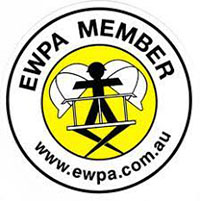COMPLAINTS
We adopt the Australian and New Zealand Standard Guidelines AS/NZS 10002:2014 definition of a complaint as an implied or express statement of dissatisfaction where a response is sought, reasonable to expect or legally required.
We are committed to protecting the rights of our students by managing and responding to complaints involving the conduct of our marketing, administration and training and assessment processes. This includes complaints directed at other students, our trainers, assessors, other staff or third parties who deliver or market or recruit on our behalf. All complaints and appeals will be treated as an opportunity for improvement, will help determine future programs and contribute to our continuous improvement systems.
The Complaints Process
Loadwise Australia welcomes complaints and has processes in place to ensure they are handled reasonably and fairly in confidence and without bias or any fear of punishment.
Step 1 – Informal resolution
Students and staff are encouraged in the first instance to talk to the person involved; this might be a trainer/assessor, member of staff, third party or another student.
If the problem continues or is not easy to resolve informally the following steps are initiated.
Step 2—Submit the complaint
Complaints may be received by phone, text, post, email or via our Complaints and Appeals or Contact forms on our website ‘Resource/ complaints- appeals’ tab. Contact details and links are available on our website and in/on our Staff and Student Handbook/Website Information Pages.
In all instances we clarify the source of the dissatisfaction, that is, is it with our services, actions, decisions, inaction, delay, policy or processes.
If possible, we establish the desired outcome of the person making the complaint (the complainant). We also establish if the complainant has any communication preferences, requires an interpreter or needs support with making the complaint.
The complaint is logged in the Complaints and Appeals Register.
Written complaints are acknowledged in writing and include:
- the expected length of time to resolve
- contact details for the complainant.
Step 3—Assess and triage
To facilitate quicker resolutions and higher levels of complainant satisfaction, complaints are triaged as Simple, Priority/Urgent or Complex. Those classified simple or urgent can be resolved promptly. Complex and sensitive complaints are allocated more time and resources.
The CEO is responsible for triaging complaints and notifying other relevant staff members who are to be involved in the resolution process.
Simple: can be resolved by staff normally within 3 days and are usually:
- any that involve external agencies and can be resolved by a suitable referral
- those that can be resolved by providing a better explanation or information
- those that relate to simple errors that can be readily fixed.
In instances where simple complaints can be handled by frontline staff, they will be logged in the Complaints Register with details of the agreed resolution, and the CEO notified.
Priority/Urgent: can normally be resolved internally within 7 days and are usually:
- those that have urgent wellbeing, health or safety implications for the person involved and/or other staff and students
- any that involve a deadline for achieving an outcome e.g. the impending end of training or assessment delivery
- those that have risks of escalation or loss of reputation.
Complex/Sensitive: may take up to 28 days to resolve and usually require an investigation that may involve people other than the complainant e.g. other students, staff, external organisations, contractors or third parties.
Step 4 - Resolve or investigate
A complaint is considered resolved when the outcome wanted by the complainant is reached or a solution is provided that is appropriate and fair in the circumstances and that corresponds with legislation and organisational policy.
If a complaint falls outside our organisational responsibility, we will provide suitable referral information or support the person accessing the appropriate services.
Investigation may be required if the complaint cannot be resolved easily or promptly. Investigation plans and reports will be developed for complex complaints to indicate how the following is considered.
- significant complaint issues
- further information required
- the estimated timeframe to resolution
- the complainants preferred outcome
- communication required to keep complainant informed of progress
- potential outcomes and solutions
- internal and relevant external policies and procedures
- legislation
A meeting with the complainant may be required to gather more information through the investigation process. This meeting can be face to face, by phone or Zoom and the complainant can elect to have a representative present. A record of the meeting is kept. Any investigation of matters raised is followed up and a response made within an agreed timeframe. Both parties are to sign the record of the meeting.
Step 5 - Communicate the outcome
Prior to finalising a complaint, we will contact the complainant to discuss the intended outcome. At this stage, the complainant has the opportunity to provide other information and ask further questions. In most instances, this will be done verbally, either by a meeting or phone, and followed up in writing taking into consideration any identified LLN issues or language barriers of the complainant. If the complainant is satisfied with the outcome, it is considered completed.
Step 6—Independent mediation
If the matter is still unresolved, an independent mediation body will be assigned to examine the matter. This party will be independent of the RTO and the complainant, and their selection will be managed by the Director/CEO with the mutual agreement of the complainant. The written decision of this body will be final and will be made within 28 days of the complaint first being submitted. If the 28-day target cannot be met, the complainant will be informed in writing giving reasons why more time is required and will then be given regular updates on the progress of the matter.
Step 7-Finalise
The Complaints and Appeals Register is updated with details of the complaint, personnel involved, actions taken and final outcome. Links to, or copies of, relevant documents and correspondence are included.
Monitoring
All complaints are used to inform our Continuous Improvement Process.
Feedback and complaints are a standing agenda item at Management/Staff/Trainer meetings. Causes for complaints and required improvements are discussed and agreed actions recorded and allocated to staff. The Continuous Improvement Register is updated accordingly.
APPEALS
The Assessment Appeals Process
Loadwise Australia will consider all appeals against assessment decisions. All appeals are treated as confidential.
Step 1 – Informal Resolution
Students are encouraged in the first instance to talk to the assessor who made the assessment decision within one week of receiving the result. Students are entitled to two attempts at assessment so in most cases the matter can be resolved by the assessor providing feedback and a resubmission or reattempt organised at a mutually convenient time.
Step 2—Review the competency decision
If the outcome is not resolved, then the assessment will be re-assessed by another, fully qualified assessor. This should be completed within 14 days.
Step 3 – Submit a formal appeal
If the student is still not satisfied with the assessment outcome, the appeal should be put in writing within 7 days using the Appeals Form provided by the Loadwise Administration Manager or via the Loadwise website ‘Resource/ complaints- appeals’ tab. Appeals may be received by phone, text, post, email or via our Appeals or Contact forms on our website. Contact details and links are available on our website and in the Student Handbook/Information webpages. The details of the appeal are logged in the Complaints and Appeals Register
Step 4 - Resolve
On receipt of the Appeals Form a meeting with the CEO is arranged. This meeting can be face to face, by phone or Zoom and students can elect to have a representative present. A record of the meeting is kept including the reasons for appeal and the agreed proposed solution. Any investigation of matters raised is followed up and a response made within an agreed timeframe. Both parties are to sign the record of the meeting.
Step 5 – Independent mediation
If the matter is still unresolved, a mutually agreed, independent mediation body will be assigned to examine the matter. The written decision of this body will be final and will be made within 28 days of the complaint first being submitted. If the 28-day target cannot be met, the complainant will be informed in writing giving reasons why more time is required and will then be given regular updates on the progress of the matter.
Step 6 – Finalise
All appeals will be recorded in the Complaints and Appeals Register with copies of, or links to, the assessment(s), outcome results records, and assessor feedback. Copies will also be kept on the student file.



